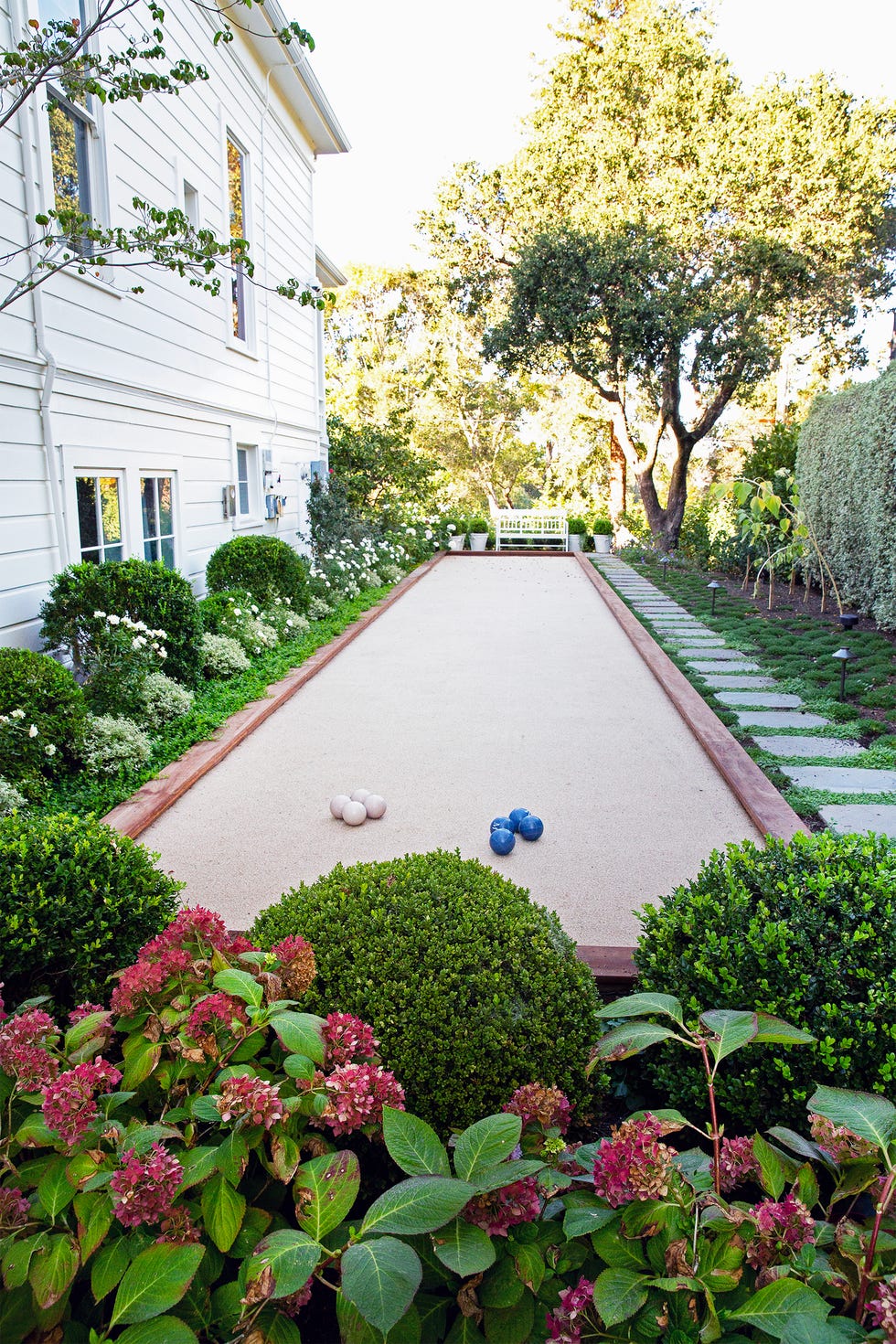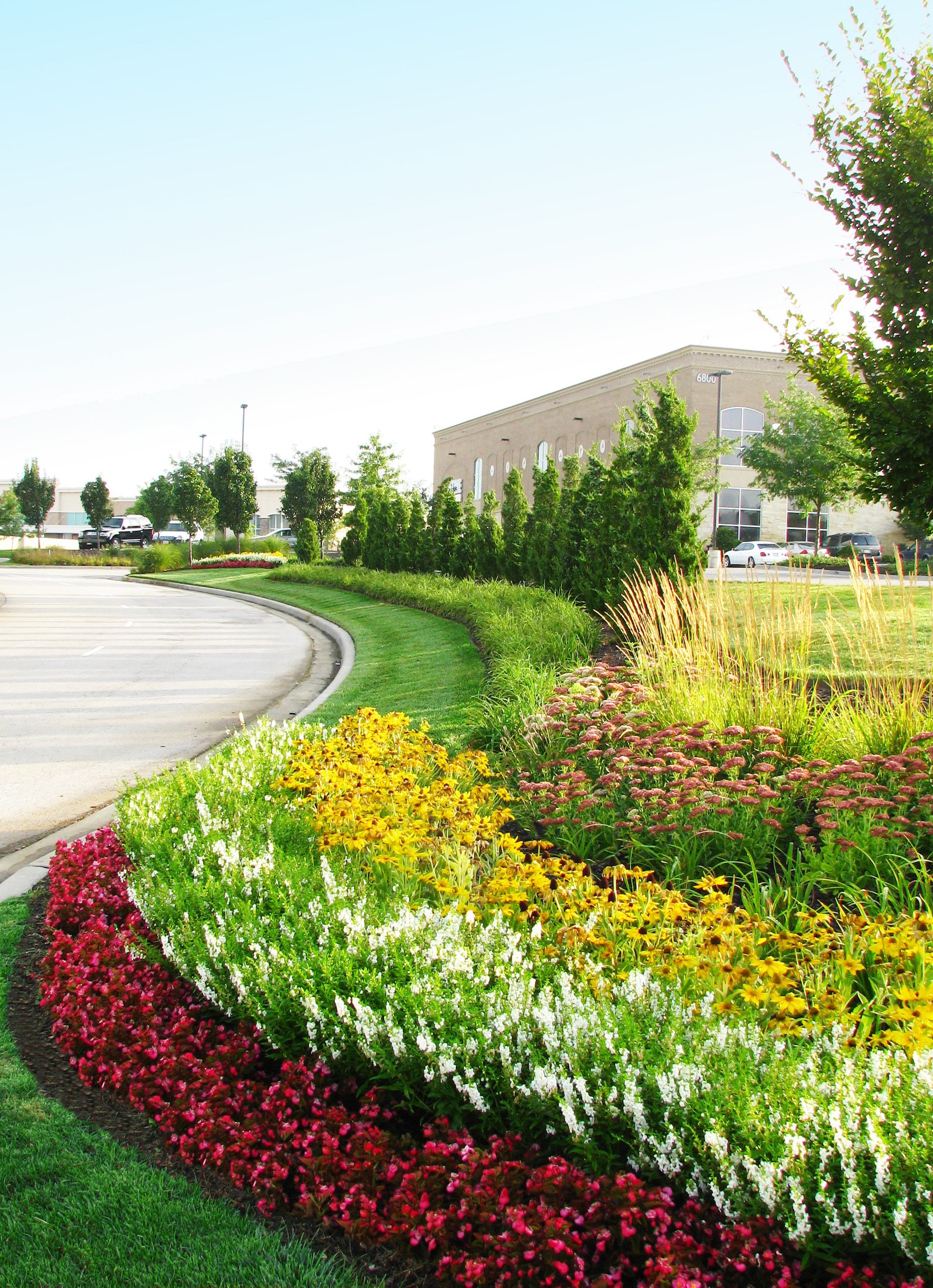Efficient Lawn Cleanup Jacksonville: Preserve a Tidy and Healthy Lawn
Efficient Lawn Cleanup Jacksonville: Preserve a Tidy and Healthy Lawn
Blog Article
Elevate Your Residential or commercial property's Aesthetic With Sustainable Landscape Design Designs and Eco-Friendly Practices

Benefits of Sustainable Landscaping
Applying lasting landscape design techniques not just preserves all-natural resources yet additionally promotes biodiversity and enhances total ecological wellness. One considerable advantage is the decrease of water intake with the usage of drought-resistant plants, rain gardens, and reliable watering systems.
Additionally, lasting landscape design can boost dirt health by lessening making use of chemical fertilizers and chemicals, thus developing a healthier setting for plant development and useful soil organisms. This, in turn, enhances the total strength of the landscape to hold up against environmental stress factors and environment change effects - landscaping companies Jacksonville. Furthermore, lasting landscaping practices can bring in diverse wild animals, consisting of pollinators like butterflies and bees, promoting a much more vivid and well balanced ecological community within the residential property
Incorporating Native Plants
To develop upon the benefits of lasting landscaping, a tactical focus on incorporating indigenous plants can better improve environmental strength and promote biodiversity within the landscape. Native plants are varieties that normally happen in a specific location and have actually progressed to flourish in the regional environment, soil problems, and ecological community. By consisting of native plants in landscape design styles, homeowner can lower water usage, lessen the demand for chemical pesticides and fertilizers, and support the local wild animals population.
Including indigenous plants also helps in maintaining the special character and identity of a region's plants. These plants commonly call for much less maintenance as soon as established, making them a cost-effective and sustainable landscaping option in the long run. Additionally, indigenous plants can draw in native pollinators like bees and butterflies, adding to the overall health of the ecological community.
When choosing indigenous plants for landscape design projects, it is important to choose types that are well-suited to the certain environmental problems of the website. Consulting with botanical gardens or regional nurseries can provide beneficial advice on selecting the right indigenous plants for a particular location. By integrating indigenous plants right into landscape design layouts, homeowner can develop gorgeous, lasting outdoor rooms that profit both the neighborhood and the environment.

Water Preservation Techniques
Effective watering approaches play a crucial function in sustainable landscape design techniques, making certain ideal water preservation initiatives in outdoor spaces. Carrying out strategies such as drip watering, rainwater harvesting, and smart irrigation systems can significantly lower water wastage while preserving a healthy landscape. Drip watering supplies water directly to the roots of plants, lessening dissipation and overflow. Rainwater harvesting entails accumulating rainwater from roof coverings and storing it for later usage in irrigation, minimizing the dependence on community water sources. Smart watering systems make use of weather data and dirt dampness degrees to adjust watering routines, avoiding overwatering and advertising water performance.
In addition to advanced watering techniques, xeriscaping is one more water-saving landscaping method that concentrates on using drought-resistant plants, mulch, and reliable irrigation to create a low-water landscape style - lawn cleanup Jacksonville. By choosing native plants that are fit to the regional environment and dirt problems, homeowner can reduce the need for too much watering, eventually preserving water and advertising a lasting outside atmosphere
Eco-Friendly Hardscaping Ideas
Enhancing exterior spaces with eco-friendly hardscaping features can add significantly to sustainable landscaping methods. Choose for materials like reclaimed timber, recycled concrete, or natural rock to minimize environmental effect when considering hardscaping elements. These products not only include an unique visual attract your outside room yet likewise decrease the demand for new sources removal.
Carrying out absorptive paving alternatives such as crushed rock or absorptive concrete can aid decrease water drainage and promote groundwater recharge. These choices allow rain to seep right into the ground, stopping disintegration and minimizing the problem on stormwater systems.
Incorporating native plants right into hardscaping designs can even more enhance eco-friendliness by supporting local wild animals and decreasing the need for too much watering or chemical therapies. By integrating eco-friendly walls or upright gardens, you can present extra plants right into metropolitan settings, improving air quality and biodiversity.
Including energy-efficient lighting, such as solar-powered LEDs, right into hardscaping styles can minimize power intake and reduced your building's carbon footprint. Prioritizing eco-friendly hardscaping ideas not only boosts the elegance of your exterior area but likewise shows a commitment to environmental stewardship.
Upkeep Tips for Lasting Landscapes

Frequently prune plants to advertise healthy development and protect click here to read against overgrowth that can lead to pest conditions or invasions. Use natural fertilizers to nurture the dirt and plants without unsafe chemicals that can seep into the atmosphere.
Final Thought
To conclude, sustainable landscape design practices offer many benefits for homeowner, from boosting the visual allure of the environments to promoting environmental conservation. By incorporating native plants, applying water conservation methods, and making use of eco-friendly hardscaping concepts, homeowner can develop attractive landscapes that are also environmentally accountable. With appropriate upkeep, sustainable landscapes can add and flourish to a healthier ecological community for both humans and wild animals.
Moreover, sustainable landscape design can enhance soil health by lessening the usage of chemical fertilizers and pesticides, thus producing a healthier atmosphere for plant development and beneficial dirt organisms.To build upon the benefits of sustainable landscape design, a strategic emphasis on incorporating native plants can further improve ecological durability and advertise biodiversity within the landscape. By consisting of indigenous plants in landscape design styles, residential or commercial property proprietors can decrease water use, decrease the demand for chemical pesticides and fertilizers, and sustain the regional wildlife populace.
These plants usually require much less upkeep once established, making them a cost-efficient and lasting landscaping service in the lengthy run. By integrating indigenous see this website plants into landscape design styles, residential or commercial property owners can develop beautiful, sustainable outside rooms that benefit both the community and the environment.
Report this page